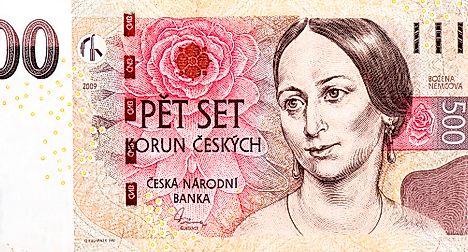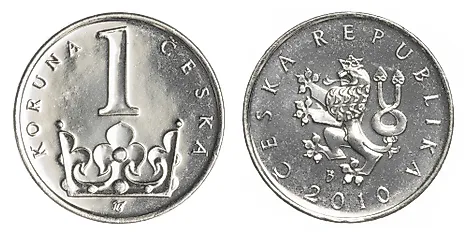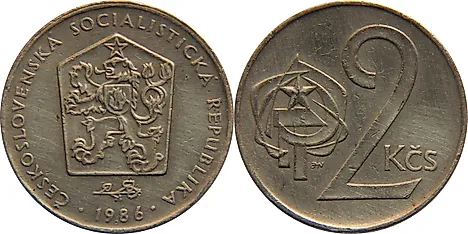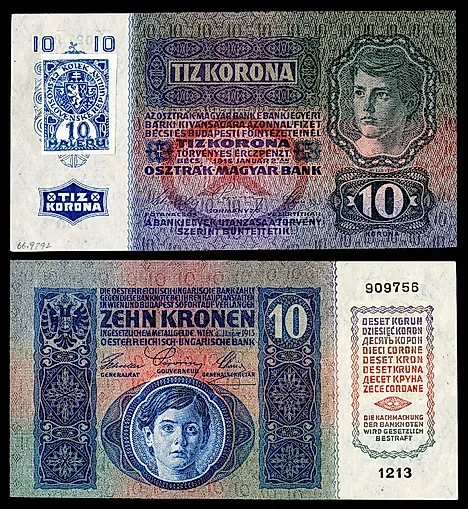Flags, Symbols & Currency of Czech Republic
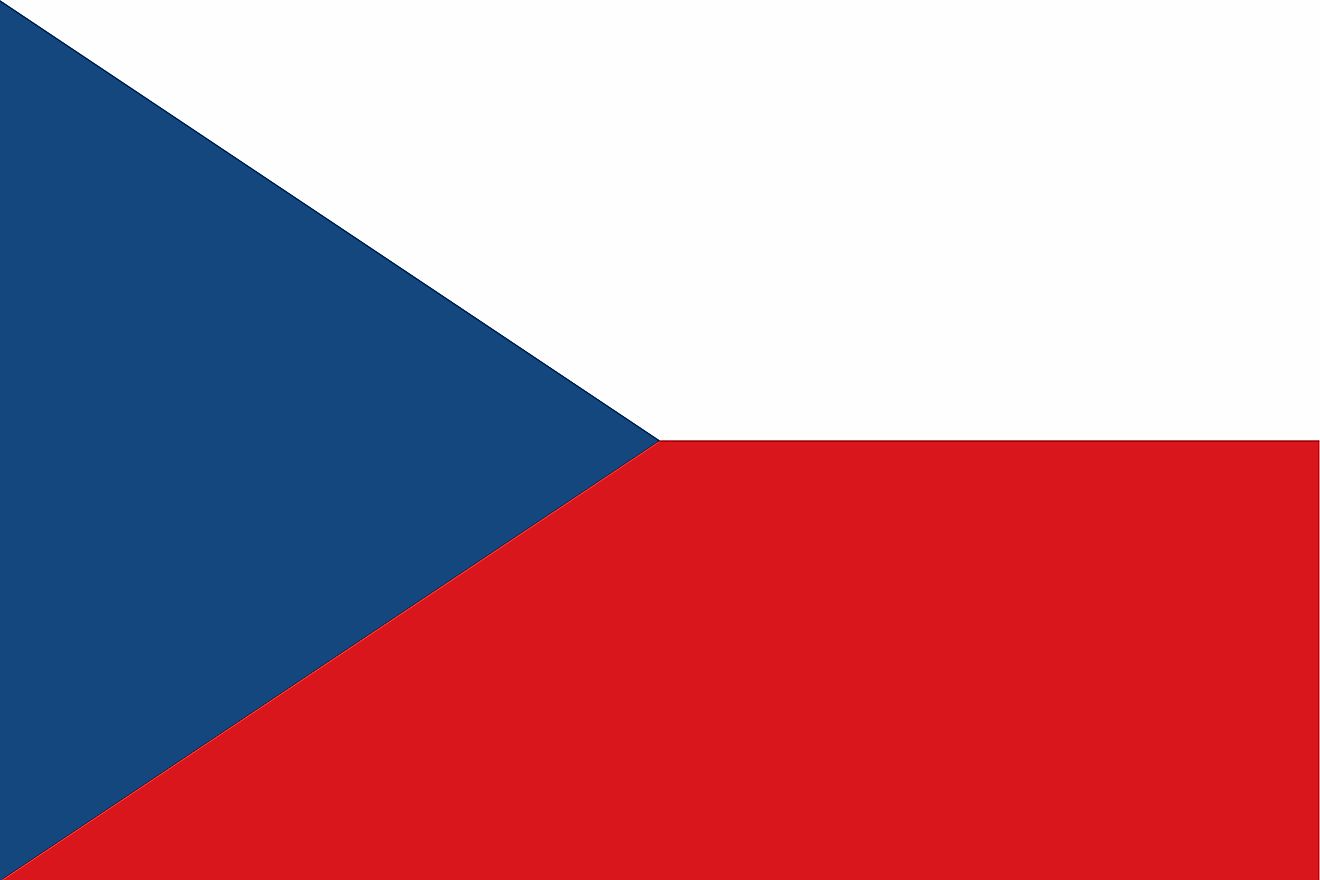
The National Flag of the Czech Republic was officially adopted on January 1, 1993.
The National Flag of Czech Republic features two equal horizontal bands of white (top) and red with a blue isosceles triangle based on the hoist side. The red color represents the courage and hardiness during war. The white color symbolizes peace and honesty. The blue colored isosceles triangle symbolizes justice, truth and loyalty. The flag has a width-to-length proportion ratio of 2:3.
History of the Flag of Czech Republic
After the First World War, the nation of Czechoslovakia was formed. The first flag of Czechoslovakia was white over red, and those colors are the heraldic colors of Kingdom of Bohemia. The blue triangle was added to the flag by the government in 1920, in an effort to distinguish it from the Poland flag. The blue color of the flag is said to represent the State of Moravia. During the Second World War, the use of this flag was discontinued and during the Nazi rule, the flag was completely banned. After the Second World War, Czechoslovakia resumed the use of this flag until 1993. When the nation of Czechoslovakia was dissolved into the independent nations of Czech Republic and Slovakia, the government of Czech Republic decided to use the old flag of Czechoslovakia for the new country.
Symbols of Czech Republic
The National Coat of Arms of the Czech Republic

The current official Coat of Arms of the Czech Republic was designed by Jirí Louda and was adopted on December 17, 1992. It represents the three historical regions which had formed the nation of Czech Republic. The silver colored double-tailed lion against the red background represents Bohemia and forms the first and fourth quarters of the coat of arms. The red and silver chequered eagle against the blue background represents Moravia and forms the second quarter of the coat of arms. The black eagle against yellow background represents Silesia and forms the third quarter of the coat of arms.
National Motto
"Pravda vitezi" ("Truth prevails")
National Anthem
- Anthem Title: "Kde domov muj" ("Where my home is")
- Music Composer: Frantisek Jan Skroup
- Lyricist: Josef Kajetan Tyl
- Date of Adoption: January 1, 1993.
"Kde domov muj" ("Where my home is") is the national anthem of Czech Republic. The music of the anthem was composed by Frantisek Jan Skroup. The lyrics have been written by Josef Kajetan Tyl. The lyrics have been taken from the first stanza of the opera "Fidlovacka" that was performed in 1834. The anthem was officially adopted on January 1, 1993.
"Kde domov muj" (Czech)
Kde domov můj, kde domov můj,
Voda hučí po lučinách,
bory šumí po skalinách,
v sadě skví se jara květ,
zemský ráj to na pohled!
A to je ta krásná země,
země česká domov můj,
země česká domov můj!
"Where my home is"
Where my home is, where my home is,
Water roars across the meadows,
Pinewoods rustle among rocks,
The orchard is glorious with spring blossom,
Paradise on earth it is to see.
And this is that beautiful land,
The Czech land, my home,
The Czech land, my home!
The Currency of Czech Republic is the Czech koruna
The current official currency of the Czech Republic is Czech koruna (Kč, CZK). 1 koruna can be further divided into 100 haléřů (hellers). However, the hellers have not been circulated since 2008. The currency name “krone” was given by the Austrian Emperor Franz Joseph I.
Coins
When the koruna was introduced in 1993, the coins were denominated as 10, 20, and 50 haléřů, and 1, 2, 5, 10, 20, and 50 korunas. However, with time the 10 haléřů, 20 haléřů, and 50 haléřů were wiped out of circulation. The Czech Republic currently uses 1, 2, 5, 10, 20, and 50-koruna coins only. The country also has a tradition of minting silver and gold commemorative coins such as the 2000 Kč gold coin. It was issued in the year 2000 to celebrate 10 centuries of Czech architecture.
Banknotes
The first banknotes had adhesive stamps and were issued on February 8, 1993. Later that year, a new series of banknotes were issued. They were denominated as 20, 50, 100, 200, 500, 1000, and 5000-koruna notes. Subsequent issues of the 1,000- and 5,000- notes had improved security features. Presently, the notes used by the citizens of the Czech Republic are 100, 200, 500, 1,000, and 2,000 korunas. The 5,000-koruna note is in existence but is seldom used. The notes have portraits of important national figures such as Charles IV, St, Agnes of Bohemia, and Emmy Destinn. The Czech koruna is mostly traded with the USD, EUR, JPY, GBP, and CHF. The most popular currency trading being EUR/CZK.
Historical Currencies of Czech Republic
The Austro-Hungarian krone replaced the gulden in 1892. After the dissolution of Austria-Hungary, Czechoslovakia had retained the currency and started using Czechoslovak koruna. The Czechoslovak koruna was replaced by the Czech koruna as the currency of the Czech Republic in 1993. The Czech koruna kept getting stronger year after year since its introduction. The Czech National Bank (ČNB) intervened in November 2013 through a monetary stimulus to weaken the exchange rate. Its action prevented excessive strengthening of the koruna.
